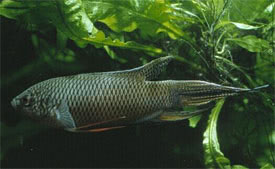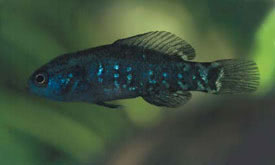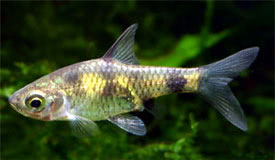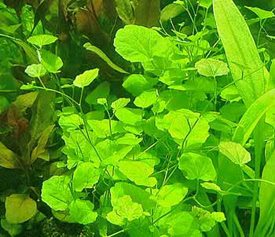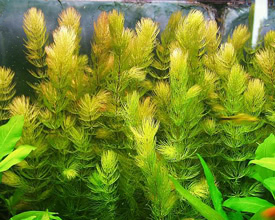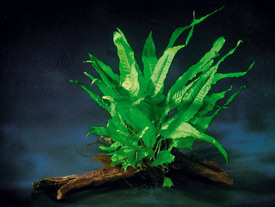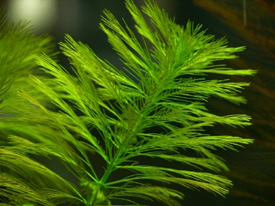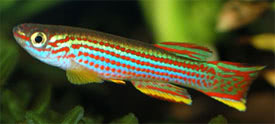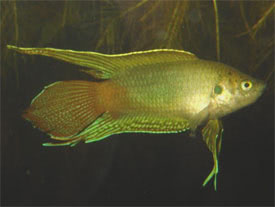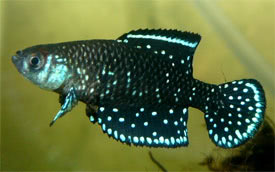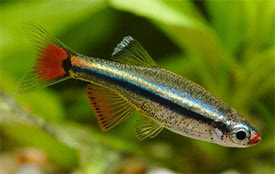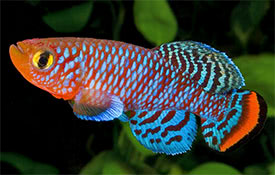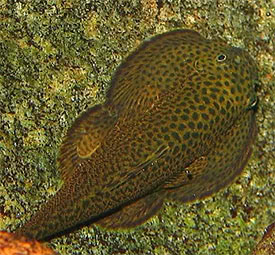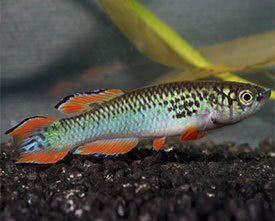
 Magyarul / Hungarian
Magyarul / Hungarian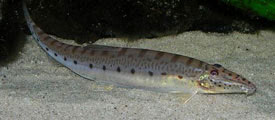
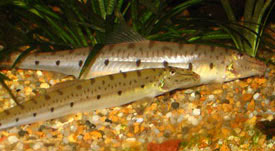
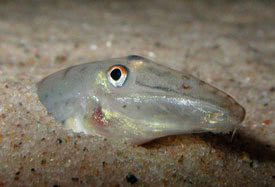
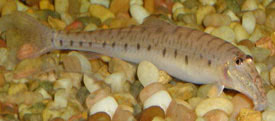
- Scientific name: Acantopsis dialuzona
- Synonyms: Acantopsis choirorhynchos, Aperioptus pictorius, Acanthopsis biaculeata, Cobitis choirorhynchos, Cobitis macrorhynchos
- Common name: Horseface loach, Long Nosed Loach, Banana Loach
- Group: Loaches
- Habitat: Southeast Asia; India, Borneo, Myanmar (Burma), Java, Malaysia, Sumatra, Thailand and Vietnam. Known from the Chao Phraya and Mekong basin.
- Size: 20 cm
- Biotope: Inhabits rapid and slow moving rivers with substrates of sand and fine gravel. It can also be found in flooded fields during the wet season.
- Social behavior: Generally a peaceful, nocturnal fish, that can be territorial or otherwise aggressive to its own kind, but physical injury is rare. It can be kept in a small group or alone.
- Diet: Omnivorous; not a fussy eater, this species will eat most foods that are offered, but they particularly enjoy live foods. They will sift through the substrate, looking for food.
- Breeding: Unsuccessful in aquarium.
- Tank: Minimum 150 litres
- Population: 3 fish for 200 litres
- Decoration: The aquarium must have a soft, sandy substrate since some of its time will be spent completely buried. Plants will be uprooted quickly, so plant them in pots to keep them in place. Use floating plants, which also subdues the lighting.
- Temperature: 16-24 °C
- pH: 6-8
- Hardness: 1-10 NK°
- Lifespan: 8-10 years
Description: The body of the Horsefaced loach is long and flattened with an exceptionally long snout. Its eyes are on the top of the head. The back and the flanks are light brown with short brown bands and scattered dots, while the belly is whitish. The fins are light brown, and the caudal fin is forked. They are widely distributed throughout Southeast Asia, and the color patterns vary somewhat based upon the natural habitat in which the particular fish originated. This wide distribution has led some to question if this is indeed a single species, or rather a group of closely related species that have not yet been differentiated. These loaches spend much of their time buried in the substrate, leaving only their eyes uncovered. As the fish matures it does this more and more and becomes mainly nocturnal. Generally Acantopsis dialuzona is a slow swimmer, but is capable of making surprisingly quick darts about the tank when startled. Like other members of this family (Cobitidae), the Horseface loach is equipped with a pair of extremely sharp spines under the eye orbits. These spines can be extended as a means of defense when the fish is threatened or attacked. Care is therefore necessary as these can become entangled in aquarium nets or can hurt the aquarists.
Females are generally larger with plumper belly. Females may also have a more reddish color, with the males showing more silver or grey in mature specimens. Males have modified pectoral fins with the first couple of branched rays extended.
A very similar species is the Longnose loach (Acantopsis octoactinotos), from which the Horseface can be distinguished by the Longnose is more aggressive, regularly feeding on juvenile fishes. Additionally, the Horseface loach buries itself in the substrate, while the Longnose loach does not. It was first imported into Europe in 1929 by the german Edmund Riechers. Since then, they have not been successfully bred in captivity, so all specimens sold in the aquarium trade are wild caught. During a recent 2012 revision of loaches by Maurice Kottelat, the scientific name for the Horseface Loach was changed from Acantopsis choirorhynchos to Acantopsis dialuzona.




